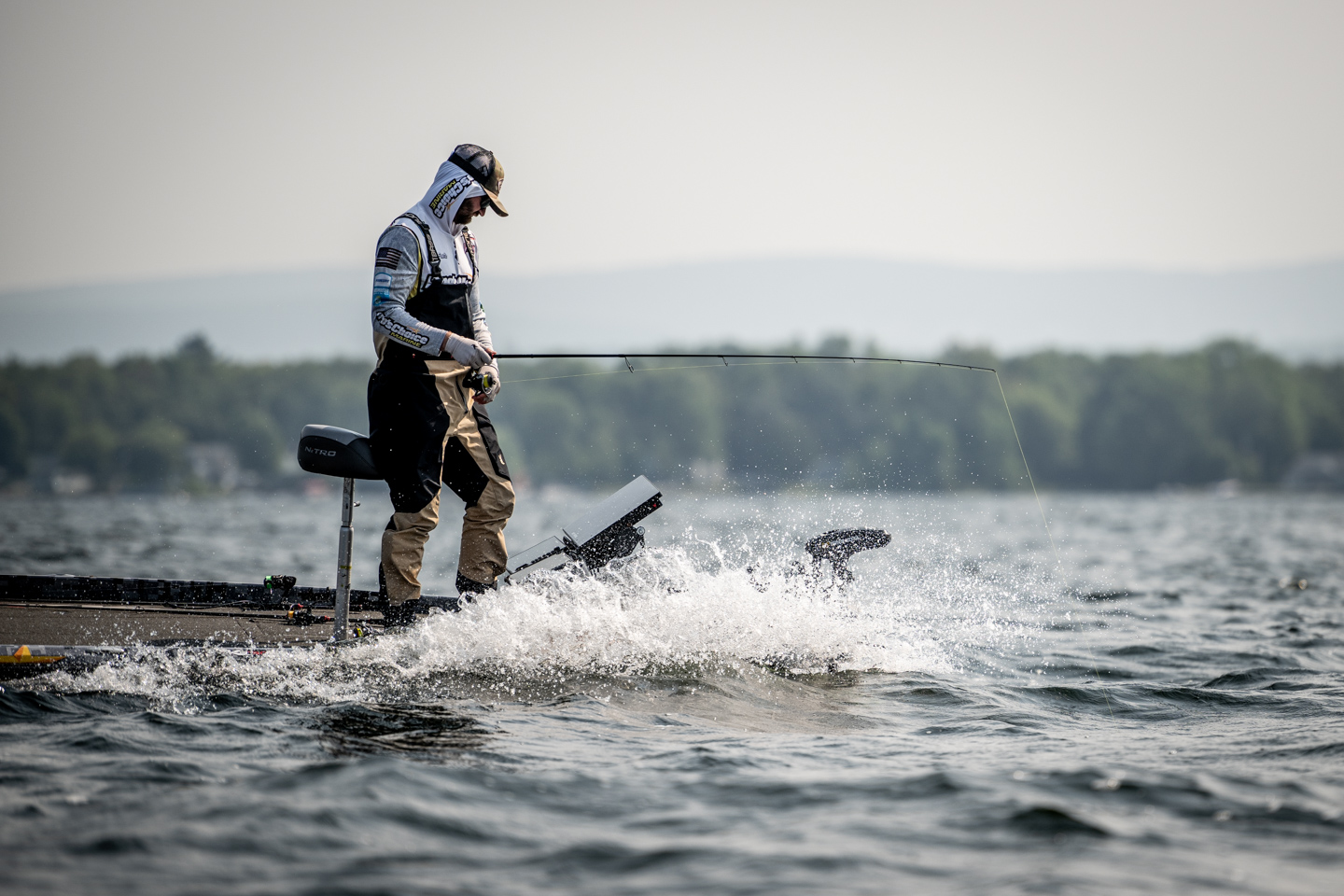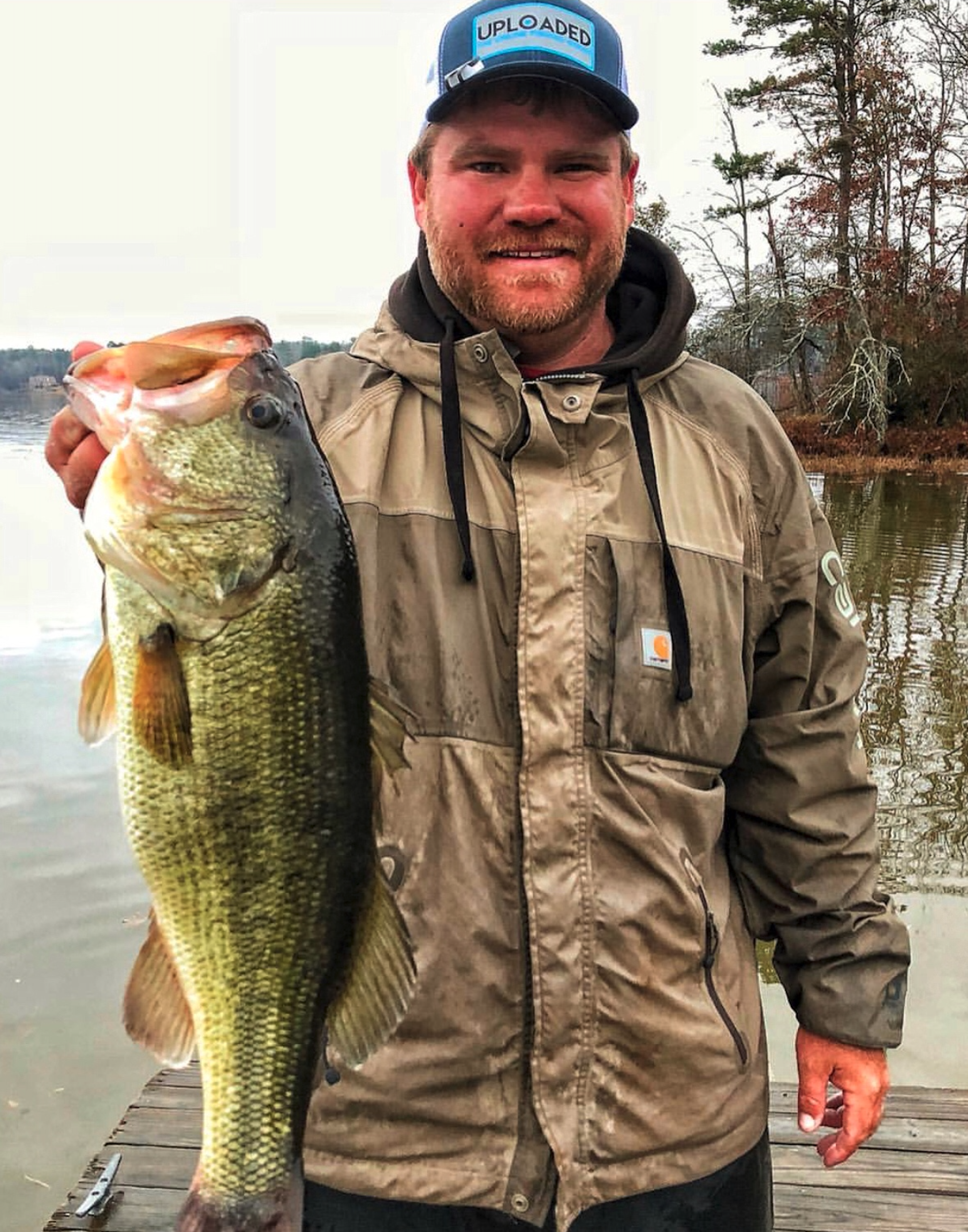
There’s been a lot of shade thrown at forward-facing sonar for quite a while now. I’m as guilty of it as anyone. It’s tech that I haven’t spent much time learning to use, and honestly feel priced out of the opportunity to do so. But, it’s tech that’s available to all the Elite anglers and it’s not against the rules to use it. So, the choice is to either learn to use it, or learn to beat it. A few, a very few, like John Cox have figured out how to beat it, sometimes. But, most of the time forward-facing sonar reigns supreme now. Still though, it’s not just a magic bullet. And it does take skill to fish this way.
The skill isn’t as easily identifiable as that of a great dock skipper; Davy Hite pointed that out yesterday. When you stand shoulder to shoulder with a guy and watch him slip a bait by a motor and under the back of a pontoon boat, it’s quite impressive. Especially if you’re one of the 99.9% of anglers that can’t do it. And that translates to TV well, an easy thing for a cameraman to catch.
But when the camera can only capture the back of a guy’s neck as he casts, seemingly aimlessly out into open water in a random direction, the skill doesn’t translate to the screen.
I have stood shoulder to shoulder with a guy though and done this deal most of the Elites are doing this week, once. It was with Opens EQ Pro Tom Frink during a day gathering content. I hadn’t seen this done in person yet, and he invited me up on deck to try my hand at it with him. He had the fish dialed in at 15- to 25- feet. He was throwing a small jighead minnow out and letting it fall and then swimming it just above the fish. The same technique we’re seeing most of the guys use this week on Champlain.
I tried to do it with him, tossing out the same bait on one of his rods, and I’d miss the fish by 15 feet or more, while he was able to hit the fish right on top of the head. If the accuracy of the cast was enough to initiate a strike, Frink would swim the straight-tail bait back on an even plane, lightly twitching his rod until the trailing fish overtook the bait. It was quite impressive to watch him accurately target the fish and talk them into biting. There was certainly skill involved. And in this setting, the wind was slack and the bass were fairly stable.
On Champlain this week, there’s been strong current, strong winds and fish shooting up and down all through the top 50 feet of water column. Hitting one of these fish on the head, while they’re racing about underneath the water, and while the transducer is in the air between each wave, that takes skill. It’s not the same skill. Perhaps there’s less intuition involved. But certainly a deep and intimate understanding of the behavior of a bass.
Regardless, for a guy like Kyoya Fujita to leave his home in Japan, come to America and on top of all that, be able to take a 1/8-ounce jighead and hit a bass on the head suspended 15 feet below the surface, 80 feet from the boat in the wide open abyss, that’s impressive. That takes skill. And credit is due him for that.





